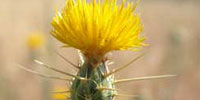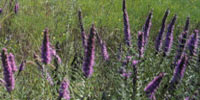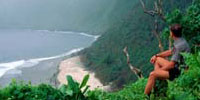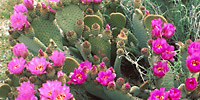Did You Know
Archive
DID YOU KNOW?
Rock Creek Park is truly a gem in our nation´s capital. It offers visitors an opportunity to reflect and soothe their spirits through the beauty of nature. Fresh air, majestic trees, wild animals, and the ebb and flow of Rock Creek emanate the delicate aura of the forest. more »DID YOU KNOW?
The natural heritage in National Parks is threatened by the invasion of exotic plants and animals as well as by human-caused disturbances that foster the establishment of exotic species. In order to manage invasive plants on park lands, 17 Exotic Plant Management Teams (EPMT's) have been deployed throughout the country. The success of the EPMT derives from its ability to adapt to local conditions and needs, using weed science expertise and partnerships. more »DID YOU KNOW?
The challenge of deterring ginseng poaching in Shenandoah National Park has been addressed by using a non-toxic dye to mark ginseng roots throughout the park. The presence of the dye on the roots makes them unsuitable for sale to reputable dealers and can be used by law enforcement personnel to identify the roots as originating in the park.more »
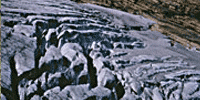
DID YOU KNOW?
Over the past century glaciers have retreated in Mount Rainier and other national parks. For example, at Glacier National Park, which in 1850 had150 glaciers, only 37 glaciers are in the park today. If the current warming trend continues, there will be no glaciers left in Glacier National Park in 30 years.DID YOU KNOW?
Tallgrass prairie once covered more than 140 million acres of the United States, from Indiana to Kansas and from Canada to Texas. Nearly all of it is gone, plowed under for agriculture. Tallgrass Prairie National Preserve, established in 1996, preserves a 10,894 acre portion of the once vast tallgrass prairie as a critical resource for the benefit, education, and enjoyment of this and future generations.more »
DID YOU KNOW?
The park in American Samoa adds a unique scenic and ecological dimension to the U.S. National Park System. From ocean depths beyond the reefs to cloud forest island summits the park has outstanding coral reef, littoral strand and tropical rain forests on four beautiful, tropical island landscapes.more »
DID YOU KNOW?
Joshua Tree National Park consists of nearly 800,000 acres set aside to protect the unique assembly of natural resources brought together by the junction of three of California's ecosystems.more »
DID YOU KNOW?
Freshwater mussels (Phylum Mollusca, Class Bivalvia) have suffered a greater decline than any other wide-ranging faunal group in North America. Because of the decline of mussels throughout North America, many National Park System units are destined to become important refuges for this endangered group of animals.more »
DID YOU KNOW?
Denali National Park and Preserve's more than 6 million acres encompass a complete sub-arctic ecosystem. Denali is well-known for its diversity of wildlife. There are 39 species of mammals (including large mammals such as grizzly bears, wolves, Dall sheep, and moose), 167 species of birds, 10 species of fish, and one species of amphibian known in Denali. There are no reptiles recorded in Denali.more »
DID YOU KNOW?
The National Park Service operates digital cameras at many parks. These cameras often show the effects of air pollution such as visibility impairment. Because these cameras are typically located near air quality monitoring sites, the camera web pages display other information along with the photo such as current levels of ozone, particulate matter, or sulfur dioxide air pollutants, visual range, and weather conditions.more »
DID YOU KNOW?
Cape Lookout National Seashore protects one of the few remaining natural coastal barrier island systems in the world. Much of the islands' natural environment and ecosystems remain intact.more »


